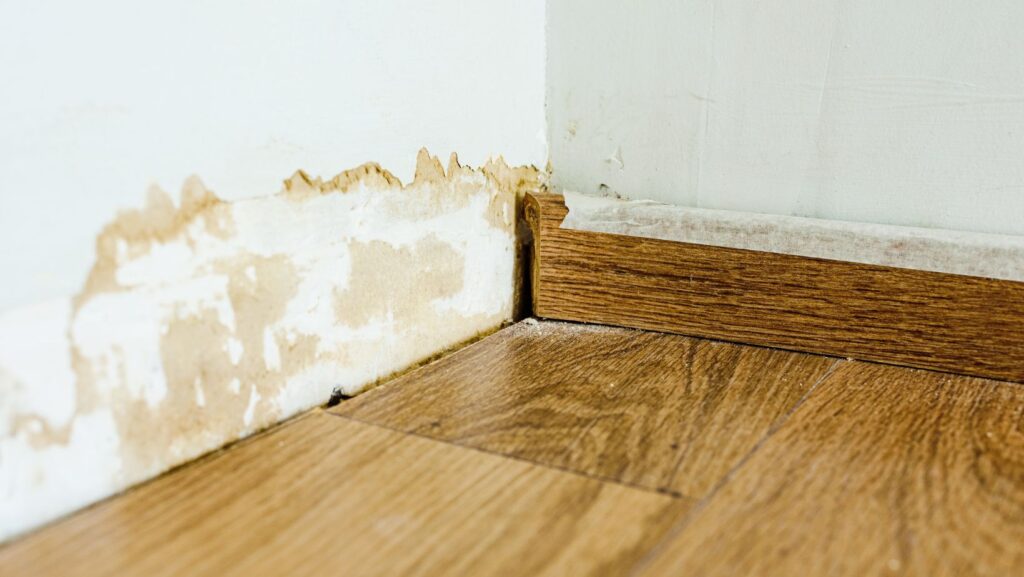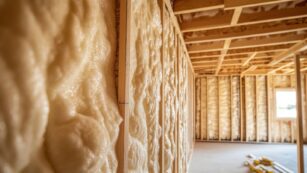
Water damage can wreak havoc on homes, affecting structures, furniture, and personal belongings. However, with prompt and proper action, it is often possible to mitigate and fix the damage. Early intervention helps prevent further deterioration, such as mold growth and structural weakening. Proper drying, cleaning, and repairs can restore affected areas to their original condition. Taking immediate steps or hiring experts, like water damage escondido, ensures the safety and integrity of your home while minimizing repair costs.
Types of Water Damage
Clean Water Damage
Water damage caused by fresh water from sources like broken pipes, overflowed sinks, or rainwater is the least severe and easiest to clean up. This type of damage typically involves clean water, which poses minimal health risks compared to contaminated water.
Immediate action to remove the water and dry affected areas can prevent further damage and mold growth. Cleaning and restoring areas affected by fresh water is generally straightforward, making addressing such incidents quickly to minimize impact crucial.
Grey Water Damage
Water damage involving slightly contaminated water from sources like washing machines, dishwashers, or toilet overflows (without feces) requires more extensive cleaning and disinfection. This type of water, known as “grey water,” can contain harmful microorganisms and chemicals.
Proper cleaning, disinfection, and drying are essential to prevent health risks and further damage to the property. Prompt action is necessary to mitigate the effects and restore the affected areas safely.
In many cases, only a professional water damage restoration company can fully check the damage, making sure all structural and hidden problems are fixed before any repairs start.
Black Water Damage
Water damage involving highly contaminated water from sources such as sewage backups, floodwaters, or toilet overflows with feces is classified as “black water.” This type of damage poses significant health risks due to harmful pathogens and toxic substances.
Professional water restoration Celina is necessary to clean, disinfect, and restore the affected areas safely. Specialists have the expertise and equipment to handle such hazardous conditions, ensuring thorough decontamination and preventing further contamination or health issues.
Steps to Fix Water Damage
Stop the Water Source
Identifying and fixing the source of water is crucial to prevent further damage to your home. Start by locating the source, which could be a leaking pipe, overflowing sink, or roof leak. Turn off the main water supply to stop the flow of water if necessary.

Once the water is contained, repair the leak or damaged area to prevent future incidents. This might involve patching a pipe, sealing a roof, or fixing an appliance. Taking these steps quickly helps to minimize damage and sets the stage for effective restoration efforts.
Remove Standing Water
Use pumps, wet vacuums, or buckets to remove standing water from the affected area promptly. Quick removal of standing water is essential to reduce the risk of further structural damage and prevent mold growth. Efficient water extraction helps to minimize the overall impact on your home and speeds up the drying process. This immediate action is a crucial first step in the water damage restoration process, ensuring a more effective recovery.
Dry the Area
Increase air circulation by using fans, dehumidifiers, and opening windows to expedite the drying process. Proper ventilation helps reduce moisture levels and prevent mold growth. Depending on the extent of the damage, drying can take several days to weeks. This step is vital for ensuring thorough drying and preventing further damage.
Remove Damaged Materials
Remove and dispose of water-damaged materials like carpets, insulation, and drywall to prevent further damage and mold growth. Moldy materials should be carefully handled and discarded to prevent the spread of spores. Use protective gear, such as gloves and masks, when handling these materials to ensure safety. Proper disposal helps maintain a healthy environment and prepares the area for restoration.
Clean and Disinfect
Clean all surfaces with a solution of water and detergent to remove dirt and debris. Then, disinfect the area using a bleach solution (1 cup of bleach to 1 gallon of water) to kill any remaining bacteria and mold. This thorough cleaning and disinfecting process helps ensure a safe and healthy environment.
Repair and Restore
Repair structural damage by replacing damaged drywall, flooring, and insulation to restore the integrity of your home. Sand and refinish wood surfaces to address any warping or discoloration. After structural repairs, repaint and refinish the affected areas to match the original appearance. This comprehensive approach ensures that the restored areas blend seamlessly with the rest of your home, both structurally and aesthetically.
How to Prevent Water Damage?
Regular Inspections
Conduct regular inspections of your home’s plumbing, roof, and foundation to catch potential issues early. Identifying and addressing problems such as leaks, cracks, and wear can prevent significant water damage and costly repairs. Regular maintenance helps ensure the long-term integrity and safety of your home.
Proper Maintenance
Maintain appliances, clean gutters, and ensure proper drainage around your home to prevent water buildup and leaks. Regular maintenance of these areas helps reduce the risk of water damage by directing water away from your home’s foundation and preventing blockages. Proper care and upkeep are essential for protecting your property from potential water-related issues.
Install Water Detectors
Install water leak detectors and automatic shut-off valves to detect leaks early and prevent extensive damage.

These devices provide timely alerts and can automatically stop the water flow, minimizing the risk of severe water damage. Implementing these preventive measures helps protect your home and reduces repair costs.
Improve Home Ventilation
Ensure proper ventilation in moisture-prone areas like bathrooms and basements to reduce the risk of mold growth. Good airflow helps keep these areas dry, preventing moisture buildup that can lead to mold and mildew issues.
FAQs
Can I fix the water damage myself?
Minor water damage can often be handled with DIY methods like drying, cleaning, and minor repairs. Severe or black water damage usually requires professional remediation.
How long does it take to fix water damage?
The time required to fix water damage can vary from a few days to several weeks, depending on the extent of the damage and the drying process.
Will insurance cover water damage repairs?
Homeowners’ insurance may cover water damage if it is sudden and accidental, such as from a burst pipe. Damage due to neglect, wear and tear, or flooding typically requires separate coverage.
Conclusion
Water damage can often be fixed with prompt and proper action, whether it’s caused by clean, grey, or black water. Understanding the steps to repair water damage and taking preventative measures can help protect your home and belongings. For severe cases, professional help is recommended to ensure thorough remediation and prevent future issues.
By staying vigilant and proactive, homeowners can minimize the impact of water damage and maintain the integrity and safety of their homes.












